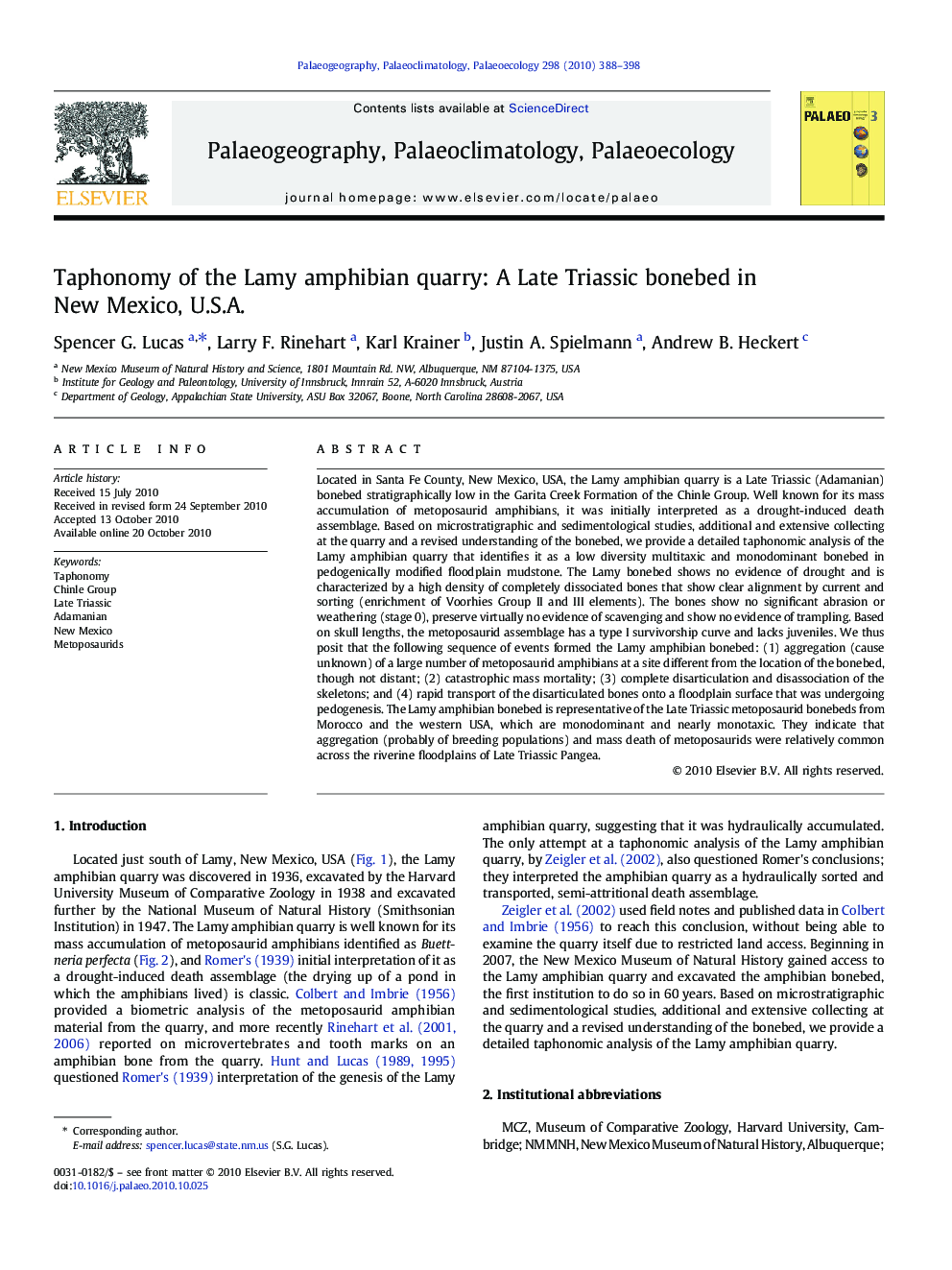| کد مقاله | کد نشریه | سال انتشار | مقاله انگلیسی | نسخه تمام متن |
|---|---|---|---|---|
| 4467430 | 1622266 | 2010 | 11 صفحه PDF | دانلود رایگان |

Located in Santa Fe County, New Mexico, USA, the Lamy amphibian quarry is a Late Triassic (Adamanian) bonebed stratigraphically low in the Garita Creek Formation of the Chinle Group. Well known for its mass accumulation of metoposaurid amphibians, it was initially interpreted as a drought-induced death assemblage. Based on microstratigraphic and sedimentological studies, additional and extensive collecting at the quarry and a revised understanding of the bonebed, we provide a detailed taphonomic analysis of the Lamy amphibian quarry that identifies it as a low diversity multitaxic and monodominant bonebed in pedogenically modified floodplain mudstone. The Lamy bonebed shows no evidence of drought and is characterized by a high density of completely dissociated bones that show clear alignment by current and sorting (enrichment of Voorhies Group II and III elements). The bones show no significant abrasion or weathering (stage 0), preserve virtually no evidence of scavenging and show no evidence of trampling. Based on skull lengths, the metoposaurid assemblage has a type I survivorship curve and lacks juveniles. We thus posit that the following sequence of events formed the Lamy amphibian bonebed: (1) aggregation (cause unknown) of a large number of metoposaurid amphibians at a site different from the location of the bonebed, though not distant; (2) catastrophic mass mortality; (3) complete disarticulation and disassociation of the skeletons; and (4) rapid transport of the disarticulated bones onto a floodplain surface that was undergoing pedogenesis. The Lamy amphibian bonebed is representative of the Late Triassic metoposaurid bonebeds from Morocco and the western USA, which are monodominant and nearly monotaxic. They indicate that aggregation (probably of breeding populations) and mass death of metoposaurids were relatively common across the riverine floodplains of Late Triassic Pangea.
Journal: Palaeogeography, Palaeoclimatology, Palaeoecology - Volume 298, Issues 3–4, 15 December 2010, Pages 388–398